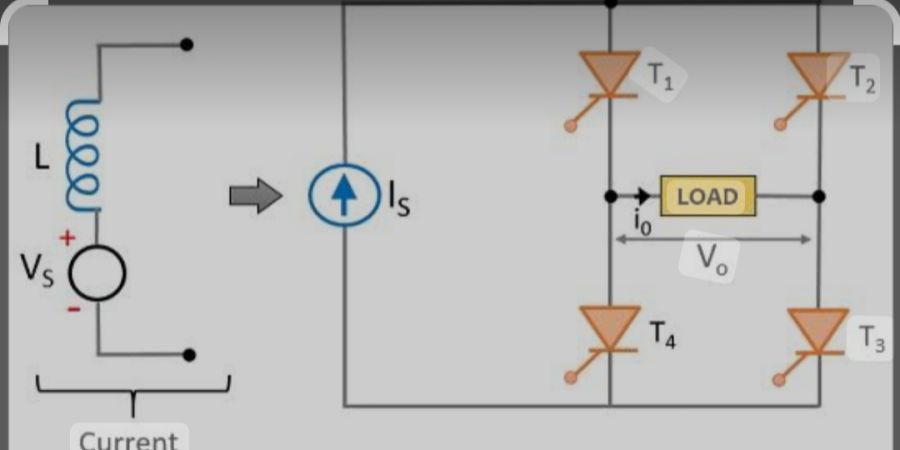

As discussed earlier, sychronous motor draws a stator current that is independent of stator frequency when v/f and e/f are maintained constant and the armature resistance is neglected. The motor develops constant flux and torque. So by controlling the stator current we can have flux and torque control. A sychronous motor can be fed from current source inverter and can have either self control or separate control. Due to more stability self control is more preferred by using either rotor position sensing or induced voltage sensing. The motor then operates in CLM mode. When fed from CSI the sychronous motor can be operated at leading power factor so that the machine voltage can be used for commutation. Thus a load commutated CSI fed synchronous motor is known as converter motor and has good stability characteristics.
Since machine commutation is employed the working speed start typically above 10 % of base speed. By using forced commutation the lower speed can be extended till zero. When load commutation employed to the machine is over excited the power factor is leading and the machine is less utilized.
The drive has moderate efficiency and is popular as CLM in medium to high power range. There may be voltage spikes in terminal voltage at the instant of commutation which depend on subtransient leakage reactance of the machine and may affect the insulation. So damper windings can be used to limit these voltage spikes. So CSI fed synchronous motor are always provided with damper windings.
When a sychronous motor is fed from CSI, the motor current are quasi square wave if the commutation is instaneous. This affects the motor behaviour and aslo, the harmonic present in stator current may causes additional heating losses. They also cause torque pulsations which are unwanted especially at low speeds. The CSI is inherently capable of regeneration. Four quadrant operation is very simple and no additional converter is required.
The waveform of torque is given in figure. According to the torque equation, torque is proportional to current Id. DC current Id flows in the dc link. Regenerative braking mode of operation is obtained by reversing phase currents. This will also reverse the source current Id. Now power flows from the machine to inverter and from inverter to dc source.
When motor speed is reversed the polarity of included voltage also reverse. With current polarity the drives gives regenerative braking mode of operation and when current direction is reversed motoring operation is obtained.




